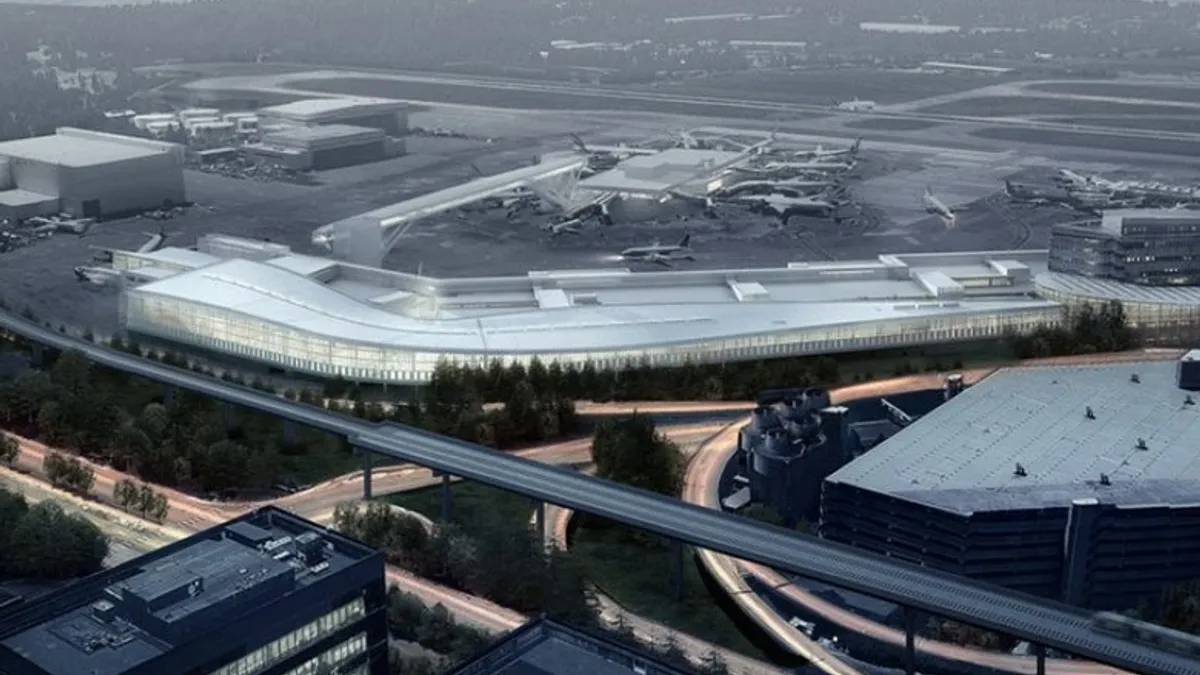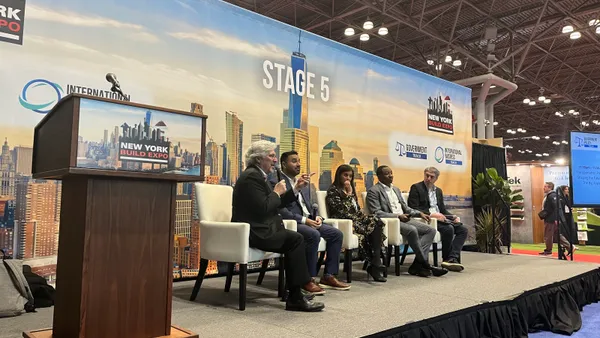Dive Brief:
- In a briefing memorandum provided at the Sept. 11 meeting of the Port of Seattle Commission, chief operating officer Dave Soike presented a guaranteed maximum price of $968 million for the International Arrivals Facility project at Seattle-Tacoma International Airport, approximately $360 million more than a 2015 estimate of $608 million, according to The Seattle Times. Design changes also have pushed completion back by eight months from September 2019 to May 2020.
- The design-build team of Clark Construction and SOM are under way with a 450,000-square foot arrivals facility to the east of Sea-Tac's Concourse A, as well as a pedestrian walkway that will connect the new grand hall to a south satellite over an existing taxiway. The walkway will be built offsite and installed during a seven-day period. Some of the changes that have created cost increases and the need for additional time include the addition of two international gates ($5.5 million) and a new outbound baggage system ($18.5 million). The Seattle-area labor market is also tight, and this, combined with the necessary security screening for workers, has resulted in mediocre subcontractor participation and higher costs for some elements of the project, with those subs already working at the airport requesting a total of $8 million for extra costs.
- The independent panel that evaluated the project also found problems between the Clark-SOM team and the Port, so managers on both sides were replaced. Design for the project is about 100% complete and construction is around 20% complete, but the majority of funding for the project has to come from revenue bonds, plus $200 million from the Airport Development Fund and $100 million from revenue generated by passenger facility charges.
Dive Insight:
As airport authorities develop capital programs to expand and modernize their facilities, they're also faced with how to pay for these initiatives. The Federal Aviation Administration provides money for some infrastructure improvements, but not on the scale of the hundreds of millions it takes to build whole terminals. Out of the agency's last round of almost $617 million in funding commitments, one of the largest was a total of $93 million in runway-related letters of intent and grants to Chicago's O'Hare International. As part of the last group of FAA Airport Improvement Project grants, Sea-Tac also received approximately $14.5 million for runway and taxiway rehabilitation.
Passenger facility charges are one revenue source that airports can use for massive upgrades to their facilities, but some airport advocates have expressed frustration about the cap of $4.50 per flight. Depending on how many segments a passenger flight comprises, this translates to a maximum passenger facility charge of $9 for one-way trips and $18 for round trips. Congress has consistently rejected efforts to raise the cap.













